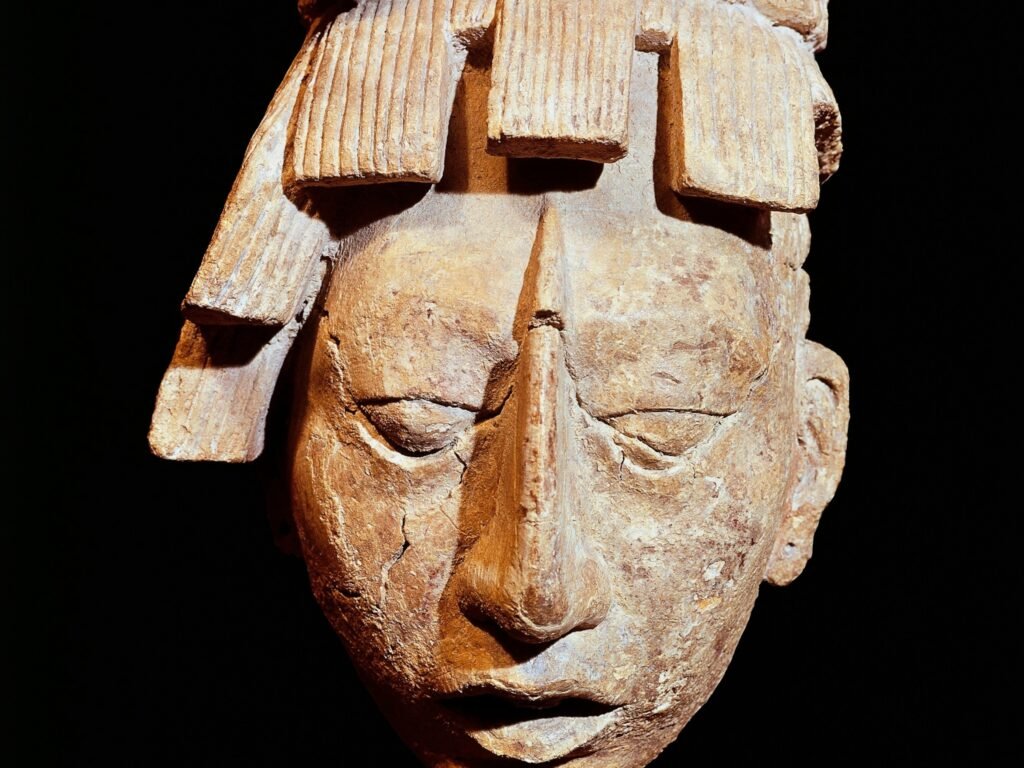The Maya civilization, with its awe-inspiring architecture, intricate hieroglyphs, and advanced knowledge of mathematics and astronomy, has captivated researchers and historians for centuries. One aspect of Maya culture that often gets overlooked, but holds significant cultural and social importance, is their hairstyles and headdresses. The Maya people held a deep respect for their hair and adorned it with elaborate headdresses that reflected their social status and personal identity.
Maya Hair and Headdresses: Cultural Significance
Within Maya society, the hair was considered more than just a crowning glory – it held a profound cultural significance. The style, length, and adornments of one’s hair served as a symbol of beauty, prestige, and social standing.
Long Hair and its Value in Maya Culture
In Maya culture, long, thick hair was highly valued and deemed as a sign of beauty and vitality. Maya individuals, both men and women, took great pride in their long flowing locks and often dedicated extensive time and effort to maintain its length and health.
Long hair represented not only physical beauty but also spiritual significance. Maya believed that hair acted as a connection between the human realm and the divine. They believed that the gods and ancestors communicated through the hair, making it a sacred part of their identity.
Furthermore, cutting one’s hair was seen as a form of punishment and a loss of spiritual power. In Maya rituals, prisoners of war or individuals who committed serious offenses had their hair forcibly and ceremonially cut as a sign of disgrace and a severing of their connection to the divine.
Male Hairstyles: Headdresses and Social Class
Maya men adorned themselves with elaborate headdresses that were not only visually striking but also played a crucial role in determining their social class and status within the community.
The headdresses worn by Maya men were made from a variety of materials, including feathers, carved jade, and intricate beadwork. These materials were carefully selected and arranged to convey specific symbols and meanings.
The different animal shapes represented in the headdresses held significant meanings. For example, a headdress adorned with eagle feathers symbolized a warrior and exemplified courage and strength. On the other hand, a headdress with quetzal feathers signified nobility and divine connection.
Feathers, particularly those of rare and exotic birds, were highly prized and indicated the social class of the wearer. The more elaborate and colorful the plumes, the higher the status of the individual.
In addition to feathers, Maya nobles also incorporated bouquets of flowers and aromatic herbs into their headdresses. This not only added a pleasing fragrance but also signified the noble’s connection to nature and their dedication to its preservation.
Female Hairstyles: Braids and Headdresses
Maya women, like their male counterparts, placed great importance on their hair and understood its significance as a reflection of their social status and personal characteristics.
Typically, Maya women divided their long, flowing hair into two parts and either braided it at the back or tied it up with intricate headdresses.
The headdresses worn by Maya women differed depending on their marital status. Married women, for example, would wear a distinctive headdress adorned with a jeweled comb and feathers, while unmarried women opted for simpler designs without the elaborate comb.
Maya women also used headdresses to showcase their personal style and creativity. Some headdresses featured intricate beadwork or woven patterns, while others showcased their affinity for specific colors or materials.
Similar to men, women also utilized flowers and aromatic herbs as adornments in their headdresses. These elements not only added an extra touch of beauty but also symbolized their connection to the natural world and their role as nurturers.
Hairstyles were not merely a matter of fashion or personal preference for Maya women but were consciously chosen to communicate their identity and position within society.
Hair and Head Modifications in Maya Culture
Custom of Flattening the Top of the Head
Among the many fascinating and distinctive practices of the Maya people was the custom of flattening the top of the head. This practice was particularly prevalent in the southern regions of the Maya territory.
The process of head flattening began during infancy when the skulls of newborns were compressed between concave splints. These splints were carefully applied, gradually reshaping the bones and resulting in a characteristic flatness at the top of the head.
The flattened head held great significance within Maya society. It was believed to denote beauty, intelligence, and a higher social status. The flatter the head, the more esteemed the individual was considered to be.
Hair Growth Prevention Techniques
Maintaining a specific head shape and appearance was of the utmost importance in Maya culture. To preserve the roundness of the face and the desired appearance, Maya individuals employed various techniques to prevent hair growth on certain parts of the head.
One commonly used technique was to apply hot towels to the scalp. The heat from the towels would cause the hair follicles to wither and prevent further growth. This practice was believed to maintain the desired appearance and symmetry of the face.
Conclusion
The Maya civilization was a complex and intricate society, where every aspect of life, even the way one wore their hair, held deep cultural and social significance. Maya hairstyles and headdresses were not only a means of personal adornment, but they also conveyed messages about an individual’s identity, social standing, and connection to the divine.
From the importance of long, flowing hair as a sign of beauty and vitality to the intricate symbolism of headdresses representing social class, Maya hairstyles provide a window into the rich cultural heritage of this ancient civilization.
